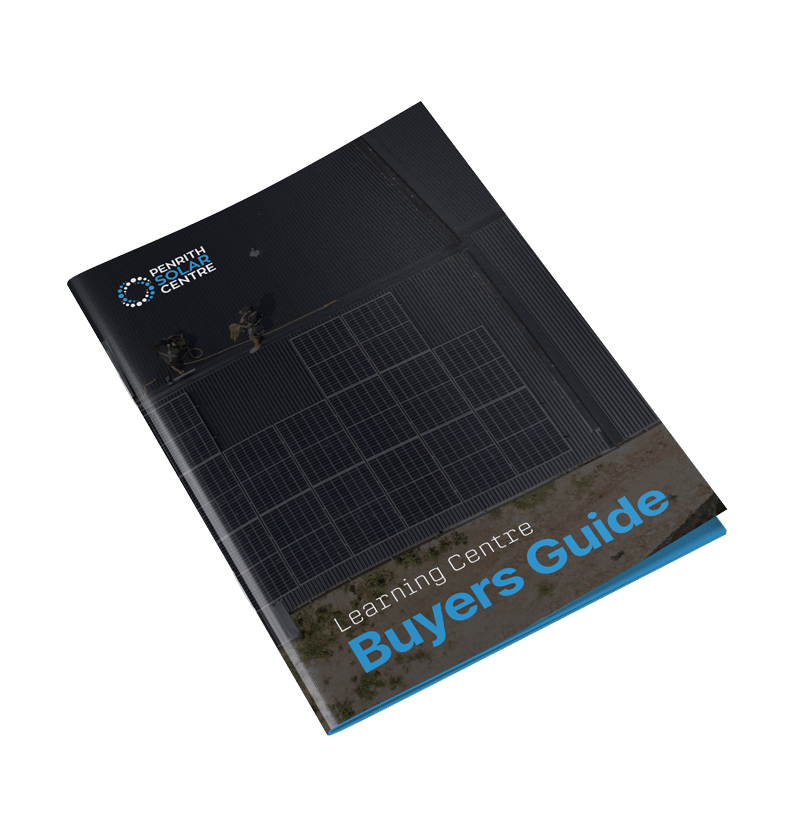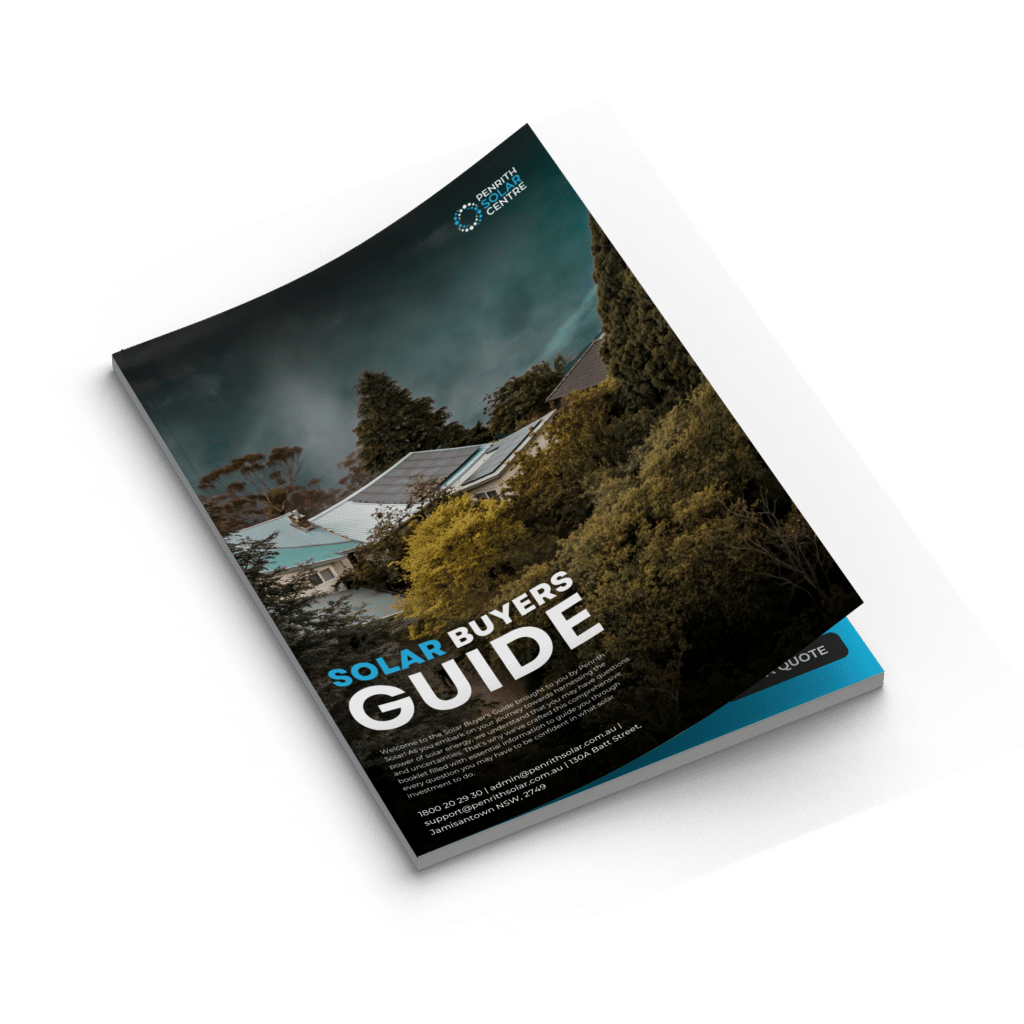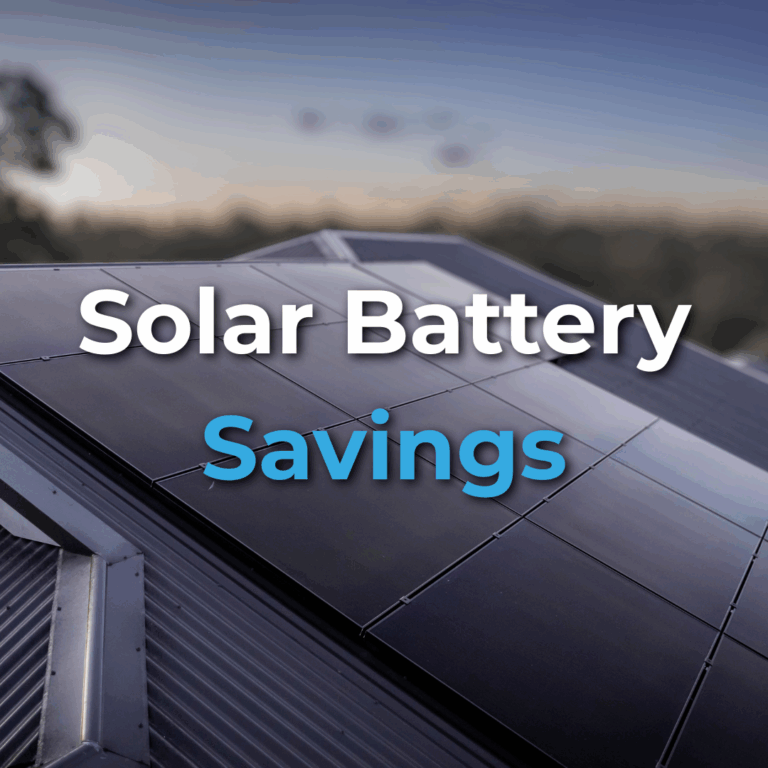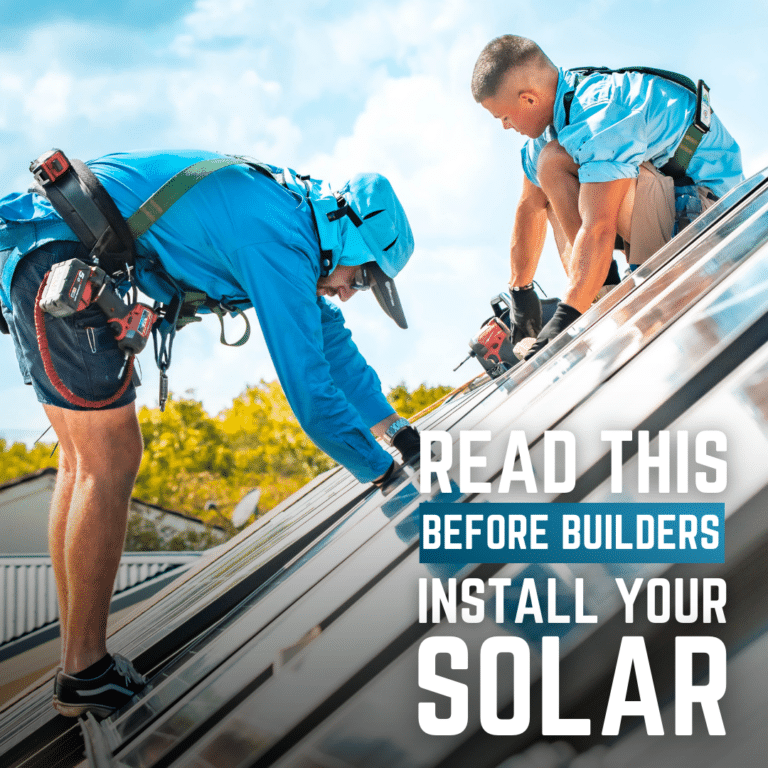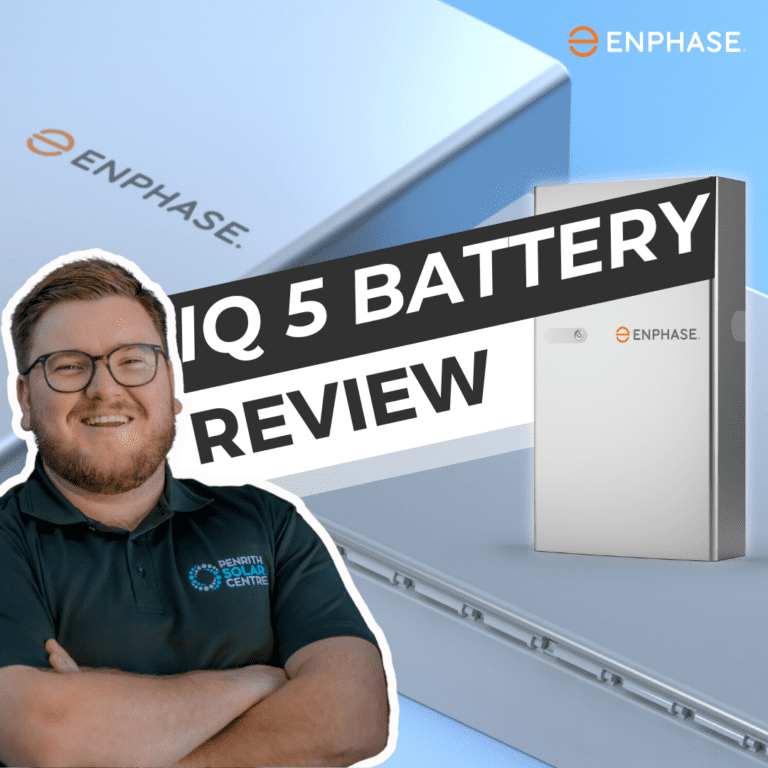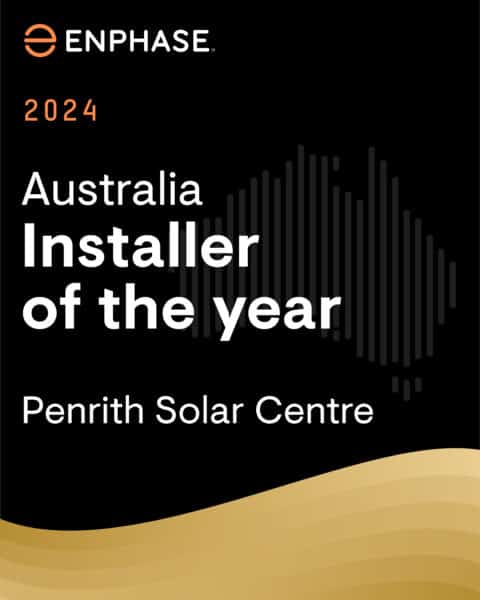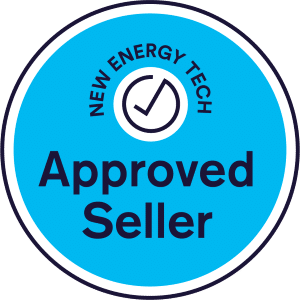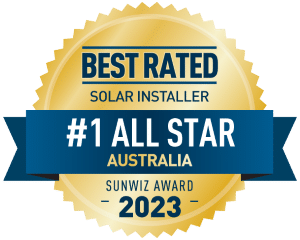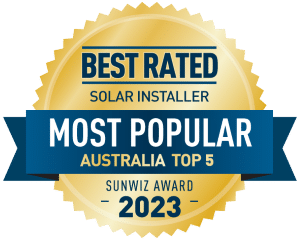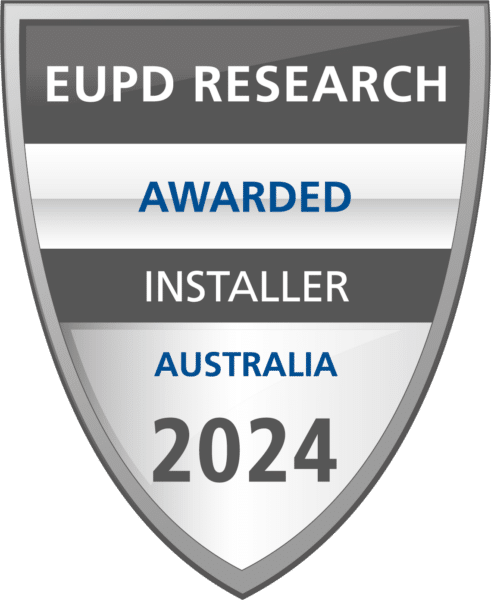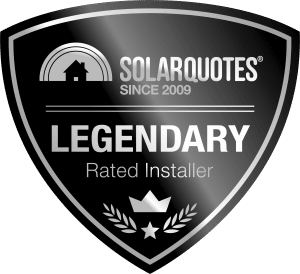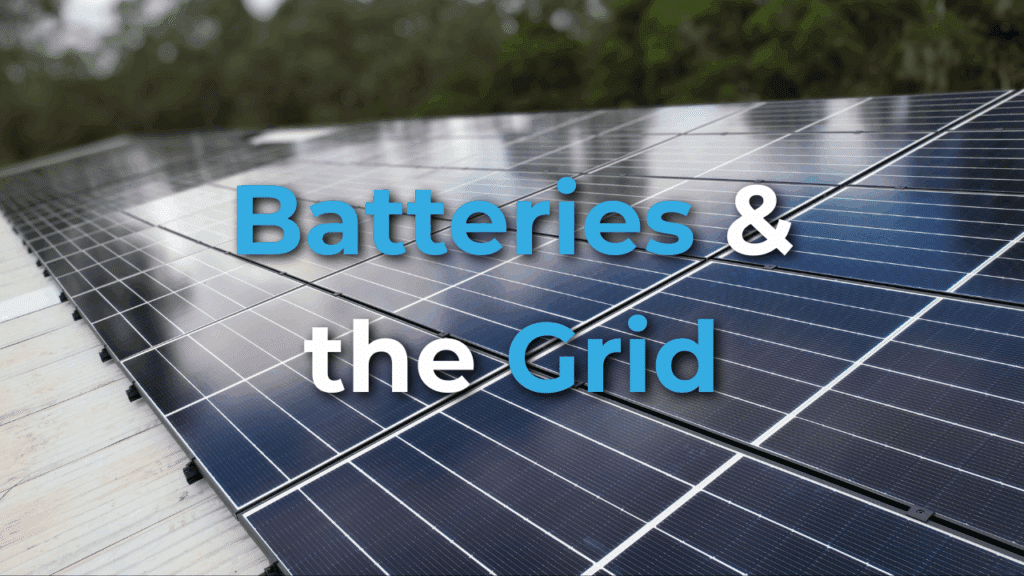
You thought going solar meant saying goodbye to the grid. You got panels on your roof, maybe a battery on the side of the house, and now you’re ready to power everything yourself. So why is your installer telling you that your battery is still connected to the grid?
Most solar battery systems in New South Wales are meant to stay connected to the grid. That’s not a mistake or a flaw. It’s the setup that provides the most flexibility, the best backup, and the greatest savings.
At PSC Energy, we help thousands of homeowners like you understand solar inside and out. You don’t need to go entirely off the grid to reap the benefits of solar energy. You simply need to know how your system works and why the grid remains an integral part of it.
In this article, you’ll learn about the following:
- What Is a Grid-Tied Solar Battery System?
- Why Your Battery Is Still Connected to the Grid
- What Happens to a Grid-tied Battery During a Blackout?
- Can You Go Off-Grid Completely?
- How a Grid-tied System Affects Your Energy Bills
- FAQ: Grid-tied Solar Systems
By the end of this article, you’ll understand what a grid-tied solar battery system is, why your battery uses the grid, and how this setup affects things like blackouts, energy bills, and future upgrades.
What Is a Grid-Tied Solar Battery System?
A grid-tied solar battery system is a setup that connects your solar panels, your battery, and your home to the electricity grid. This is the most common setup in NSW and across Australia.
Here’s how it works in simple terms:
- Your solar panels make electricity during the day.
- Your home uses that electricity first.
- If there’s extra, it charges your battery.
- If the battery is fully charged, the excess power is sent back to the grid.
- At night or on cloudy days, your home can use the battery first, then the grid if needed.
Your system knows what to do through a piece of equipment called an inverter. This device manages the flow of power between the panels, the battery, your home, and the grid. It adjusts settings based on the source of power and your home’s specific needs.
It does this because solar panels generate direct current (DC) electricity, and the house and grid run on alternating current (AC) electricity. To make matters more confusing, the battery only stores DC energy. That’s a lot of conversions your inverter has to make.
In NSW, most homes are connected to the grid by one of three Distribution Network Service Providers (DNSPs): Ausgrid, Endeavour Energy, or Essential Energy. These companies don’t sell you electricity. They operate the poles and wires that transmit power. Your system connects to their grid, allowing energy to flow in and out as needed.
This setup gives you the best of both worlds. You can lower your bills and use more clean energy without cutting yourself off completely. It also helps you earn something back by selling extra energy to the grid.
If you’re interested in solar batteries, you might want to check out the following article titled, Are Solar Batteries Worth It in NSW? PSC’s Ultimate Guide for 2025.
Click here for a free solar quote.
Why Your Battery Is Still Connected to the Grid
Your battery is connected to the grid because it provides your home with more options, greater savings, and improved backup. This setup is called grid-tied, and it is the standard design for most homes in NSW.
Some people think the battery should work independently, like a large rechargeable power bank. However, most batteries work in conjunction with the grid, not in place of it. That’s not a flaw in the system. It’s designed to give you the most control and support.
Here are the main reasons your battery stays connected to the grid:
Your home can use the cheapest source of power available.
Your system will always use your solar power first because it’s free. If the battery runs out or there’s no sun, your home can switch to grid power. This means you won’t lose power just because the sun isn’t shining.
You can send extra solar back to the grid.
When your battery is full, your extra solar power doesn’t go to waste. It is sent back to the grid, and your energy retailer provides you with a small payment for it. This is called a feed-in tariff. The rate depends on your electricity plan and your location in NSW.
You can keep the lights on even when your battery is low.
If your battery drains overnight or during adverse weather conditions, the grid is still there to supply power. You don’t have to worry about running out of electricity.
It helps manage power flow safely and in accordance with regulations.
Grid connection helps balance energy across your home and the local network. DNSPs, such as Ausgrid or Essential Energy, also have safety rules. Batteries must meet those rules to stay connected.
It supports future upgrades.
Grid-tied systems are flexible. You can add more panels later, switch to a time-of-use electricity plan or even install more storage. The grid helps you accomplish all of that without altering your entire setup.
Many homeowners also gain access to the Cheaper Home Batteries Program (a federal battery rebate) when they install a grid-connected battery. This makes the upfront cost easier to manage, and it’s one reason grid-tied systems are so common across the state.
Being connected to the grid does not mean your solar system isn’t working. It means your home is smarter about where it gets power and where it sends it.
If you’re interested in learning a bit more about the price of solar batteries, you might want to check out the following article titled, How Much Are Solar Batteries? A Full Breakdown of Prices, Rebates, and Value in 2025.
What Happens to a Grid-tied Battery During a Blackout?
Many homeowners think that having solar and a battery means the lights will stay on during a power outage. However, in most cases, if your system is grid-tied and you don’t have blackout protection, your power will still be interrupted when the grid goes down.
Here’s why: grid-tied systems are designed to shut off during a blackout to keep electricity from flowing back into the grid. This protects utility workers who may be fixing power lines. Even if your battery is full, the system won’t send power to your home unless it has special backup features.
To stay powered during a blackout, your system requires blackout protection or a backup power mode. This means your system has extra wiring and controls that let it disconnect from the grid safely and send battery power to part of your home. It’s a standard feature with solar batteries.
Here’s what that usually looks like:
- Your home is split into two sections: essential circuits (such as your fridge, a few lights, and possibly internet) and non-essential circuits (like the oven, washing machine, or air conditioning) if you have a three-phase home. If your home is single-phase, the whole house can be backed up without a three-phase battery backup.
- When a blackout happens, the inverter senses the loss of grid power.
- It switches over to battery mode and powers designated circuits.
- When the grid returns, it reverts to its normal state.
Without blackout protection, your battery still works every day. It charges from solar and discharges to power your home. However, when the grid goes down, your system will stop sending power, just like a house without solar panels.
If you’re interested in looking at some solar battery choices, you might want to check out the following article titled, Which Solar Battery Should I Buy?
Can You Go Off-Grid Completely?
Yes, you can go off-grid completely, but most homeowners in NSW choose not to. Living off-grid means your home is not connected to the electricity grid at all. You rely only on your solar panels, your battery, and sometimes a backup generator to power everything.
This setup gives you complete energy independence. However, it also comes with higher costs, greater risks, and increased responsibility.
Here’s why most people stay grid-connected:
Off-grid systems cost more:
You need a much larger battery to store enough energy for nights, cloudy days, and high usage times. You may also need a backup generator. All of that adds to the cost of installation and maintenance.
You don’t get help from the grid:
If your battery runs out of power, there’s no backup. You could lose power to lights, heating, and the fridge, among other things. You need to manage your power use carefully every day.
You miss out on feed-in tariffs:
When you go off-grid, you can’t send extra energy to the grid. That means you lose any credits or payments from your retailer, or you can’t participate in energy trading.
It’s harder to upgrade or change plans:
Off-grid systems are more complex. You can’t easily change electricity plans or add new energy devices. Everything must be self-managed.
In NSW, staying connected to the grid gives you flexibility. You still use solar and battery power for most of the day, but the grid steps in when you need it.
Going entirely off-grid is possible, but it works best for people in remote areas where the grid doesn’t reach or where a power connection would be too expensive. For suburban and urban homes, a grid-tied system is typically the more suitable choice.
If you’re interested in learning more about sizing solar batteries, you might want to check out the following article titled, What Size Solar Battery Do You Need?
How a Grid-tied System Affects Your Energy Bills
A grid-tied solar battery system helps you lower your electricity bills in two ways:
- It allows you to use your own solar energy instead of purchasing power from the grid.
- It allows you to sell excess solar energy back to the grid for a small credit on your bill. This credit is called a feed-in tariff.
During the day, your solar panels make electricity. Your home uses what it needs, and the battery stores the rest. In the evening, your battery sends stored power to your home. If the battery runs out, your system pulls power from the grid. This means you’re buying less electricity overall.
When your battery is fully charged and your panels continue to produce power, that extra energy flows back to the grid. Your electricity provider gives you a credit for every kilowatt hour you export. This doesn’t generate a huge profit, but it helps offset the costs of buying electricity from the grid at other times.
Your feed-in tariff rate depends on your electricity plan and the provider you choose. Some plans offer higher rates during peak hours or lower rates during the day. It’s worth checking your plan and comparing it with others to get the best deal for your setup.
By using more of your own solar power and buying less from the grid, you can take more control over your electricity bills. You won’t be fully independent, but you’ll spend less each month and rely more on clean energy.
If you’re interested in learning a bit more about the federal solar battery rebate, also known as the Federal Cheaper Home Batteries Program, you might want to check out the following article titled, What the 2025 Federal Election and the Government Rebate Means for Solar Batteries in Australia.
Bottom Line: Is Grid Connection A Problem?
No, it’s not a problem. Having your battery connected to the grid is actually a good thing. It gives your home flexibility. It helps you avoid outages. It lowers your bills. And it allows you to access incentives and feed-in tariffs that wouldn’t be available otherwise.
Being grid-tied doesn’t mean your system isn’t working. It means it’s working smart. You’re using solar energy when it’s available, storing what you can, and still relying on the grid as a backup when needed. That’s not failure. That’s good design.
If you’re still unsure whether your system has blackout protection or would like to upgrade your setup, please get in touch with us at PSC Energy. Ask us about adding a backup circuit or checking your plan’s feed-in tariff. The more you understand your setup, the greater control you’ll have over your home’s energy.
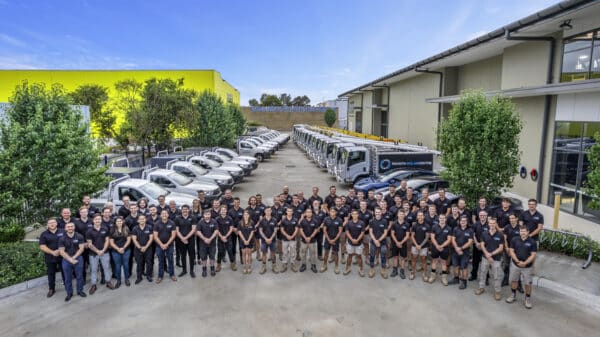
If you’re interested in learning a bit more about solar and battery rebates in NSW, Australia, you might want to check out the following article titled, Ultimate Guide to Australia’s 2025 Solar Rebate and Battery Rebate: Federal and NSW Rebate for Solar.
FAQ: Grid-tied Solar Systems
Why is my solar battery connected to the grid in NSW?
Your battery stays connected to the grid for flexibility, savings, and backup. You use your solar energy first, store any excess in the battery, and use the grid when you need more.
What is a grid-tied solar battery system?
It links your panels, battery, home, and the grid. Solar powers your home first, charges the battery next, and sends any excess energy to the grid. At night, you use the battery, then the grid.
How does a grid-connected battery work with solar panels?
Panels make DC power. The inverter converts it to AC for your home. The battery stores DC and discharges later. The inverter manages the flow of energy between the home, the battery, and the grid.
Do I still have power during a blackout with a grid-tied battery?
Only if your system includes blackout protection. Without backup wiring and a controller, a grid-tied system shuts down during an outage for safety.
What is blackout protection, and do I need it?
Blackout protection isolates your home from the grid and powers selected circuits from the battery. You need it if you want the fridge, lights, and internet to stay on in outages.
Which circuits run during a blackout with a solar battery?
Your installer sets up essential circuits if your home has a three-phase power supply. These circuits often include the fridge, some lights, Wi-Fi, and key power points. High-draw items, such as ovens, usually stay on the backup side. If it’s a single-phase home, the whole house can be backed up.
Do I need a smart meter for a solar battery in NSW?
Yes. A smart meter tracks imports and exports for billing. Your retailer will install or upgrade it after your solar paperwork is lodged.
How do feed-in tariffs work with a solar battery?
When the battery is fully charged, any excess solar energy is exported to the grid. Your retailer pays a credit per kWh. Credits help offset what you import at other times.
How does time-of-use pricing affect solar battery savings?
You save the most when you avoid importing during peak times. Charge the battery from solar energy during the day and use it in the evening when tariffs are higher.
What is export limiting, and will it affect my solar battery?
Your DNSP may cap export power to protect the local network. Your inverter enforces the cap. A battery helps by storing excess instead of pushing past the limit.
Can I go fully off-grid with solar and batteries in Australia?
Yes, but most NSW homes stay grid-connected. Off-grid needs larger batteries, careful load management, and often a generator. It costs more and carries more risk.
What are the pros and cons of going off-grid vs grid-tied?
Off-grid living offers independence, but it requires more gear and discipline. Grid-tied systems lower bills, offer backup options, and allow you to export energy for credits with simpler maintenance.
How big does my solar battery need to be to go off-grid?
You size for nights, cloudy days, and peak loads. Most suburban homes require ample storage and careful use. Your installer can model this from your bills.
Is a solar battery installed on one phase in a three-phase home?
Yes. The battery connects to one phase. Your smart meter nets imports and exports across all phases, so the benefit still applies to the whole home’s total.
Will a single-phase solar battery power a three-phase home in a blackout?
Only the backed-up phase and circuits run unless you use a system designed for three-phase backup. Ask your installer what level of backup your site supports.
How does a grid-tied solar battery affect my electricity bills?
You can save on power by using solar energy first and a battery second. You also receive credits for exports. Bills drop because you import fewer peak-priced kWh.
Who is my DNSP, and why does it matter?
Your DNSP is Ausgrid, Endeavour Energy, or Essential Energy in NSW. They establish grid rules, such as export limits and connection standards, that your system must meet.
Can I add more solar panels or more batteries later?
Yes, in most cases. Grid-tied designs are flexible. Your installer can expand within DNSP and inverter limits and update settings on your smart meter plan.
Does a solar battery still help if my feed-in tariff is low?
Yes. Low export rates make self-consumption more valuable. A battery stores daytime solar so you use it at night instead of buying from the grid.
What happens to solar exports when my battery is full?
Your system sends the extra to the grid up to your export limit. If you reach the limit, the inverter may curtail its output, or the battery can absorb more if there is sufficient space remaining.
Is staying grid-connected a problem for solar independence?
No. It is a smart design. You use solar and storage first and keep the grid as a safety net. You gain savings, stability, and options.
What should I ask my installer about a grid-tied battery?
Ask about backup circuits, export limits, smart meter timelines, time-of-use strategy, three-phase considerations, and room to expand panels or storage later.

